66 F. high temperature in the Twin Cities Wednesday.
68 F. average high for May 9.
70 F. high last year, on May 9, 2011.
Weekend Preview:
Saturday: Mix of clouds and sun, steady or slowly rising barometer. Winds: NW 5-10. Highs:
65-70
Sunday: Plenty of sun, steady barometer. Winds:
W/SW 5-10. High; 69-74
 Spring (For Real)
Spring (For Real).
No more Canadian Relapses brewing; highs approach 70 Saturday, low 70s
likely Mother's Day, with highs approaching 80 by Wednesday or Thursday
of next week. Data: European ECMWF model.
May 19-20: next chance of significant, widespread rain for much of Minnesota (ECMWF
model).
"
...And finally, yes there have been years with ice covered lakes
for the opener. On opening day in 1950, lakes were still frozen as far
south as Detroit Lakes and Osakis. Four other years with frozen lakes,
primarily in the north, were 1966, 1979, 1996, 2008 and 2009. Just a
couple lakes in the far northeastern tip of Minnesota still had ice on
them for the '09 opener. This season, the ice left
the lakes at a record pace across most of Minnesota. The ice left
lakes in southern Minnesota from two to three weeks ahead of long term
averages, and from three weeks to nearly a month early across the central and north.
The 2012 Governor's Fishing Opener is on Lake Waconia. The average
date of ice out for Lake Waconia is April 10. This season the lake
became ice free on March 18." - more Walleye Fishing Opener Weather Factoids from the Minnesota Climatology Working Group below.
"
I think a lot of young people realize that this is an urgent
time, and that we're not going to solve this problem just by riding our
bikes more," Loorz said in an interview....
He argues that U.S.
politicians are so preoccupied by the lingering economic crisis and this
year's presidential campaign that they're ignoring an environmental
threat that could ultimately bring about devastating consequences." - teenagers are going to court to battle climate change, as reported in The Atlantic below.
March:
325th consecutive month with global temperatures above the 20th century average. Details below.
"Average" Weather For Minnesota's Walleye Fishing Opener? Here's an excerpt from a terrific article about "normal weather" for the Opener - courtesy of the
Minnesota Climatology Working Group: "
Minnesota's
Fishing Opener weather is typified by partly cloudy to cloudy skies,
morning temperatures in the low 40's, and afternoon temperatures
climbing to near 70. Three out of four years are free of measurable
precipitation. A trace of snow has been reported in northern Minnesota
on at least five of the last 64 fishing openers. On at least four
occasions, some lakes were still frozen for the opener. Generally there
is enough wind to be felt on the face, maybe enough to 'fly' a flag.
Weather on Minnesota fishing opener dates is highly variable. 64 years
of fishing opener weather data are summarized here to offer a glimpse of
what is 'typical' and what is 'extreme'.
Opening day temperatures have started as low as 24 degrees at
International Falls (1996,2004), with freezing temperatures possible
even in Minneapolis (31 degrees in 1979). On the warm side, St. Cloud
saw 92 degrees in 1987, Minneapolis reported 91 in 1987, and
International Falls reached 88 in 1977. The average early morning
temperature varies from the high 30's in the northeast to the high 40's
along the southern border. The average afternoon temperature generally
ranges from the mid 60's along the northern border, to the low 70's in
the extreme south. Along the shore of Lake Superior, highs are held in
the mid 50's.
Three quarters of past opening days have been free of measurable
precipitation. Two thirds of the fishing openers have been free of any
precipitation, measurable or not. On those days with measurable rain,
the amounts averaged close to a half-inch in the south and a quarter
inch in the north. No amounts over one inch were recorded at
International Falls, while Minneapolis experienced 1.15 in 1962 and 1.64
in 1965. St. Cloud saw 1.03 inches in 2008. Snowfall has generally has
been limited to traces. Traces of snow were officially recorded in
1963, 1993, and 2009 at International Falls, and in 1968 at St. Cloud. A
tenth (.1) of an inch fell at International Falls in 2000."
Photo credit above: "
Minnesota State Attorney General
Walter Mondale and Minnesota Governor Karl Rolvaag display their catch
on opening day of the 1963 Minnesota fishing season."
Saturday Sunrise Temperatures. Sorry - this map is more of an eye-chart test. To see the data full-screen
click here,
data courtesy of NOAA. Early morning temperatures for the Fishing
Opener range from upper 30s to around 40 up north, to mid 40s metro
lakes. Winds are forecast to be under 10 mph, blowing from the west to
northwest.
One Soggy Week. According to NOAA and Ham Weather
there were 694 daily, 24-hour rainfall records set across American
between May 2 and May 9. Now we're shifting into a warmer, drier pattern
which may linger for much of the next 2 weeks.
U.S. Completes Warmest 12-Month Period in 117 Years. Details from
The Washington Post: "
As
far back as records go (1895), never has the U.S. strung together 12
straight months warmer than May 2011 to April 2012 according to new
data released today by NOAA’s National Climatic Data Center (NCDC) . The
record-setting 12-month period edged out November 1999-October 2000,
the 2nd warmest 12-month period, by 0.1°F. The average temperature was
2.8 degrees F above the 20th century average."
April Climate Highlights. Here are a few headlines from
NOAA's NCDC:
- Warmer-than-average temperatures were present for a large portion of the nation during April — six states in the central U.S. and three states in the Northeast had April temperatures ranking among their ten warmest. Above-average temperatures were also present for the Southeast, Upper Midwest, and much of the West. No state in the contiguous United States had April temperatures that were below average.
- April 2012 came on the heels of the warmest March on record for the Lower-48, and eight states — Illinois, Indiana, Kentucky, Michigan, Wisconsin,Ohio, Pennsylvania, and West Virginia — had April temperatures which were, despite being warmer than normal, were still not as warm as their March temperatures.
Photo Of The Day: "Family of Waterspouts". Wow. This is impressive. Thanks to Jerrod W Brown and
Twitter
for passing these along off the coast of Bayou La Batre, Alabama. I
don't think I've ever seen anything like this, with 4 waterspouts on the
ground, simultaneously.
Photo Of The Day (Honorable Mention): "Pyrocumulus". Here's a
good explanation from the Flagstaff, Arizona office of The National Weather Service: "
Here
is a photo taken from the National Weather Service office in Bellemont
on Monday you might find interesting. There are three ingredients
required for cloud formation. For a cloud to form the air must have
moisture, the air must rise and cool to saturation and there must be
atmospheric particles in the air for the moisture to condense onto. In
the meteorological world, we call the atmospheric particles that water
vapor condenses onto Condensation Nuclei – or CCN for short. CCN can
take the form of a number of particles such smoke particles, vehicle
emissions and dust. Forest fires and prescribed burns, like the
prescribed burn that occurred over Hart Prairie, can heat low level air
close to the ground enough to rise. In addition, the abundance of
smoke provides plenty of CCN for water vapor rising in the air parcel
to condense onto. We call the types of clouds that form in this way
“Pyrocumulus.” “Pyro” is for the clouds association with fire and
“cumulus” is because the clouds form from convectively rising air
currents."
A Hurricane Before Memorial Day? Hurricane season
begins, on paper at least, June 1. But the Gulf of Mexico has been
running a good 1-3 degrees warmer than average in recent months, and
there's growing concern that unusually warm sea surface temperatures may
spark tropical development within 2 weeks. Here's a story from
meteorologist Jason Samenow at The Washington Post's
Capital Weather Gang: "
Last
night, the GFS simulated the development of a tropical storm over the
southern Caribbean. It intensifies the storm to around hurricane
status, carrying it northward to a position just east of Florida and
then off the coast of North Carolina. Before getting alarmed, this
simulation is more than two full weeks into the future, when the model
has no skill. Sometimes we call this model fantasy-land. And for the
record, the next run of the model early this morning loses the storm
(although some of the model ensemble members show it). So do we make
anything of last night’s simulation?"
* NOAA's GFS forecast map above is valid 12z, Thursday, May 24. We'll see.
Flood Insurance Wrangling Intensifies In Senate. Here's an excerpt from an article at
The Hill: "
With
the National Flood Insurance Program (NFIP) set to expire this month,
Senate Republicans and Democrats are skirmishing behind closed doors
over whether to ram a long-term reform bill through the floor or settle
for a short-term measure that punts major decisions to a later date.
Democrats say they prefer a long-term bill, but have not brought it to
the floor. Sen. David Vitter (R-La.) said Wednesday he would offer a
five-year reform bill as an amendment to whatever legislation is next
considered by the Senate to force the issue."
Thunderstorms: Airmass Storms And "Supercells". Yes,
thunderstorms come in different flavors, the garden variety storms that
bubble up late each day in response to the sun's heating of the ground,
and the rotating storms that focus wind shear around a vertical axis,
capable of baseball-size hail and tornadoes. Here's an excerpt of a good
story from
WJLA-TV in Washington D.C.: "
Well,
it’s the time of the year where our weather attention turns to the
possibility of severe weather… and that means possible thunderstorms
and even tornadoes! Did you know that most tornadoes emanate from a
particular type of thunderstorm? Do you happen to know what the unique
name of that thunderstorm is? If you answered “A supercell
thunderstorm”, then you know your weather! For most of the year, the
Mid-Atlantic region is affected by regular ol’ thunderstorms.
Run-of-the-mill thunderstorms take several different forms, but the
most common type we find in the summer time is called an “air-mass
thunderstorm”.
3 Damaging Dust Devils Strike Las Vegas (May 7). I don't think I've ever seen this level of damage from a series of dust devils; details from the
Las Vegas office of The National Weather Service: "
On
the afternoon of May 7, 2012, at least three well developed dust devils
formed on the east side of the Las Vegas Valley. While dust devils
themselves are not that unusual, it is rare when a dust devil causes
damage to property or injures a person. Dust devils are most common
during the late spring and early summer months when conditions favorable
to their formation are more prevalent. The dust devils that developed
on the afternoon of May 7th formed around 3:15 PM. Conditions were sunny
early that afternoon, however cumulus clouds began to develop ahead an
upper level low that was moving southeast from southern Utah into
northern Arizona around this time. Based on a ground survey of damages
that occurred and photographs from local media, winds as high as 55 to
60 mph are estimated with these dust devils."
Hurricane-Proofing Your Home. Here's some helpful advice from a story at
AccuWeather.com: "
Eighteen
hurricane-prone states currently have building code laws that dictate
certain requirements for hurricane protection. Of them, Florida and
Virginia are ranked highest for the strength of their codes, according
to the Insurance Institute for Business & Home Safety. Florida codes for hurricane-proofing your home focus on the roof, the doors and the windows.
Roof:
Having the roof ripped from a house or
collapsed is perhaps the most damaging hit that a hurricane can
deliver, besides leveling the entire building. Without the roof, the
interior of the house is exposed to winds, rain and debris. The
structure of the house may not even be able to stand once the roof is
detached. To ensure safety, roofs in Florida are restricted to certain
shapes that allow optimal drainage and they must follow strict load
requirements based on the kind of material the roof is built of."
Photo credit above: "
Residents in Dare County prepare for last fall's Hurricane Irene. Photo courtesy of County of Dare."
"Double Rainbow". Here's a terrific example of a double rainbow, from the El Paso office of The National Weather Service,
via Facebook.
For more information on the physics that causes this optical illusion
click here (white light refracted, or bent, twice within individual rain
drops). Very nice.
Swimming With The Manatees. This is terrific video from Ft. Lauderdale, courtesy of AP and
YouTube: "
A
group of manatees swam along the shoreline near Fort Lauderdale,
Florida on Sunday. The manatees then stopped near a group of beachgoers
before lifeguards moved the crowd back. (May 9)."
Should We Build A "Death Star"? We have the technology (but probably don't have the $$). But should we build it?
The Washington Post weighs in; here's an excerpt: "
I
wish to address the most important policy question of the millennium:
Should we build a Death Star? This debate picked up this year after some
Lehigh University students estimated that just the steel for a Death Star would cost $852 quadrillion, or 13,000 times the current GDP of the Earth. Kevin Drum suggests
that this cost estimate is too low but, in the context of a galactic
economy, a Death Star is perfectly affordable and “totally worth it.” Seth Masket and Jamelle Bouie
highlight the military downside of the Death Star, suggesting that
more people might rebel against the wholesale genocide of the Empire,
and that the Death Star would be the prime target of any rebellion." Photo above: Wikipedia.
The "Hornster" Bicycle Has A Horn That's Louder Than A Concorde. Hey, that was my nickname back in college! Long story...I'll spare you. I need this for my souped-up tricycle; details from
gizmag.com: "
It’s
no secret that cyclists are at a disadvantage when sharing the roads
with motorized vehicles – not only do bikes offer less in the way of
protection and speed than cars, but drivers often don’t even notice
that they’re there. The Hornster, a bicycle featuring what is claimed to
be the world’s loudest bicycle horn, was designed to bring attention
to that fact. The bike was designed by Yannick Read, who works for the
UK’s Environmental Transport Association (ETA). The company provides
insurance for cyclists, and wanted something that would publicize just
how important it is for drivers (particularly drivers of big trucks) to
acknowledge the presence of cyclists."
KSTP-TV Airs Meteorologist's Skin Cancer Surgery.
Dave, we all hope you recover quickly. Good for KSTP for performing a
public service and alerting viewers to the risks of skin cancer and
early detection.
TVSpy.com has the story (and video clip): "
Longtime KSTP chief meteorologist Dave Dahl
invited cameras into the operating room as he underwent surgery to
remove spots on his chest and leg that had been diagnosed as
non-melanoma skin cancer. Dahl, whose career has been dedicated to
keeping viewers informed about potentially dangerous weather, used his
skin cancer surgery as an opportunity to raise awareness about the
dangers of sun exposure. “It’s scary,” Dahl told reporter Joe Mazan. “It’s just one of those things like, ‘Wow.’ You never thought it would happen to you” (video inside)."
"Jet Man" Buzzes The Lush Rio de Janeiro Coast. Who is this guy? I want one of those jetpack things...badly.
Gizmag.com has the story: "
He's launched over the Grand Canyon. He's flown alongside traditional aircraft. He's even attempted to leap across continents.
Now "Jetman" and all-around airborne lunatic Yves Rossy is giving us a
tour of the beautiful Rio de Janeiro shoreline by way of his carbon
fiber jet wing."
Photo credit above: "
In this photograph provided by the
Breitling, Yves Rossy, known as the Jetman, prepares to land on
Copacabana beach after a successful flight over Rio de Janeiro, Brazil,
Wednesday, May 2, 2012. The Swiss aviator dropped from a helicopter
and deployed the Jet powered carbon-kevlar Jetwing which he uses his
body to steer as he flew over the Brazilian city before landing on
Copacabana Beach. (Felipe Dana/Breitling photo via AP Images)."
Video: Meteorologist's Green Dress Confuses Morning Anchor.
Truth be told morning anchors are easily confused (all that sleep
deprivation and caffeine-enabled happy-talk). Check out the story (and
video clip) from
TVSpy.com: "
WJBK meteorologist Jessica Starr
wasn’t on weather duty Tuesday morning so she decided to wear a green
dress on-air. Starr couldn’t pass up the opportunity, though, to step
in front of the weather green screen and turn invisible. The move
confused morning anchor Jason Carr, who apparently doesn’t understand the finer points of chroma key (video above). It just doesn’t work that way…"

"
Business men go down with their businesses because they like the
old way so well they cannot bring themselves to change. One sees them
all about - men who do not know that yesterday is past, and who woke up
this morning with their last year's ideas." - Henry Ford (from the terrific book about Ford's recent turnaround, "American Icon")

Content Is No Longer King. Here's an excerpt of a fascinating story from
allthingsd.com: “
Content
is king” has been a long-lived mantra of media. And in the 1990s and
early 2000s, it was true. But over the last several years, the Internet
has upheaved the aphorism. It used to be that media was linear. And in
that world, content and
distribution were married. The HBO channel had HBO content. A New York
Times subscription bought you New York Times content. And Vogue and
Cosmopolitan each month delivered exclusive and proprietary content from
… Vogue and Cosmopolitan. Until the Internet came along. In every
single one of the varied
businesses the Internet has touched — from commerce to media to
communications to payments — there has been one common impact:
disaggregation."

 Getting Better
Getting Better. Under a mostly-blue sky (with no significant rain; only a trace of sprinkles in Duluth)
highs ranged from 62 at Alexandria to 65 St. Cloud, 66 in the Twin Cities and Duluth and 67 at International Falls.
Paul's Conservation Minnesota Outlook for the Twin Cities and all of Minnesota:
TODAY: Warm sun, too nice to be inside. Winds: S 15. High: 75
THURSDAY NIGHT: Clear to partly cloudy. Low: 59
FRIDAY: Cloudier, risk of a shower or T-shower.
Most of the day should be dry in the metro (heaviest showers track
across northern Minnesota). Winds: W 10-15. High: near 70
FRIDAY NIGHT: Evening shower possible, clouds linger much of the night, cooler. Low: 48
SATURDAY: Becoming partly sunny. Slowly rising barometer. Winds: NW 5-10. High: 68
SATURDAY NIGHT: Mostly clear and comfortably cool. Low: 50 (40s central and northern MN).
MOTHER'S DAY: Happy moms, more sunscreen. Lot's of lukewarm sunshine. Winds: W/SW 5-10. High: 72
MONDAY: Plenty of sun, milder. Low: 52. High: 75
TUESDAY: Clouds increase, PM T-shower? Low: 56. High: 76
WEDNESDAY: Sun returns, quite pleasant. Low: 57. High: 73
"Redneck Ice Fishing". No ice on northern lakes this year - in 2012 the only threat will be sunburn.
Fishing Fever
I seem to have a magnetic force field that
repels fish. My buddies often threaten to use me as bait. Serious
anglers have an itch that a scratch won't reach. The first decent
Saturday in nearly a month, falling on the Walleye Fishing Opener?
Sounds too good to be true. "There has to be a catch Paul."
No flurries or wind chill this year. Don't
laugh. According to folks at Minnesota's Climate Office northern lakes
have seen snow on 5 of the last 64 Fishing Openers. Northern lakes were
still frozen in 1966, 1979, 1996, 2008 and 2009!
On average 2 out of 3 openers are dry, and the
forecast still looks good for Saturday: sunrise temperatures up north
near 40, morning clouds giving way to partly sunny skies and highs in
the mid 60s. A slowly rising barometer isn't great for catching fish, so
there's your excuse why the BIG ONE got away.
Mother's Day looks sunnier and milder; low 70s (with extra sunscreen).
Monsoon season is over, for now: no big storms
in sight - just a fleeting T-shower tomorrow with a weak cool frontal
passage. Temperatures hit 80 late next; jackets optional until further
notice.
Timing is everything. I'm predicting extra spring in your step this weekend.
Climate Stories...
National Security Implications Of Climate Change Requires Serious Study.
At least our military isn't in denial - they're hedging their bets,
just in case those "warmist/alarmist" climate scientists turn out to be
right. Here's a clip of an article at
consumerenergyreports.com: "
Earlier this week, the Washington Times wrote a particularly angry and irrational editorial arguing against the military planning for climate change. The proximate reason for their editorial was Secretary Panetta’s speech
on May 2 at the Environmental Defense Fund in which he said “Climate
Change has a Dramatic Impact on Our National Security.” ASP blogged about
the speech last week. Normally, I would not take the time to respond to
the Washington Times editorial, as they are notorious for being at the
far edge of the spectrum on this issue, and far away from any
scientific mainstream, but some of the assertions are
so scurrilous that they require a response. They simply cannot stand
without being challenged. They write that the national-security threat of climate change “is a fight America can’t afford.”
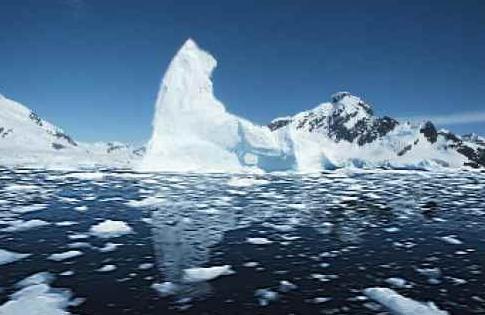 New Antarctic Ice Shelf Threatened By Warming
New Antarctic Ice Shelf Threatened By Warming. The story from
Reuters; here's an excerpt: "
The Filchner-Ronne Ice Shelf fringing the
Weddell Sea on the eastern side of Antarctica has so far not seen ice
loss from global warming and much of the observation of melting has
focused on the western side of the continent around the Amundsen Sea.
But new research from the Alfred Wegener Institute for Polar and Marine
Research in Germany says the 450,000-sq-km ice shelf is under threat. "According
to our calculations, this protective barrier will disintegrate by the
end of this century," said Dr Harmut Hellmer, lead author of the study,
published in the journal Nature this week."
An Inconvenient Lawsuit: Teenagers Take Global Warming To The Courts. Here's an excerpt of a fascinating article from
The Atlantic: "
Alec
Loorz turns 18 at the end of this month. While finishing high school
and playing Ultimate Frisbee on weekends, he's also suing the federal
government in U.S. District Court in Washington, D.C. The Ventura,
California, teen and four other juvenile plaintiffs want government
officials to do more to prevent the risks of climate change -- the
dangerous storms, heat waves, rising sea levels, and food-supply
disruptions that scientists warn will threaten their generation absent a
major turnabout in global energy policy. Specifically, the students are
demanding that the U.S. government start reducing national emissions of
carbon dioxide by at least six percent per year beginning in 2013."
Photo credit above: "Alec Loorz became a climate activist at age 12 after watching "An Inconvenient Truth" twice is one evening." (Victoria Loorz).
World Fisheries Congress: Climate Change Is Affecting Fishing Stocks. Here's a snippet of an article at
thefishsite.com: "
Key
findings from the report published include: There are clear changes in
the depth, distribution, migration and spawning behaviours of fish –
many of which can be related to warming sea temperatures.
- Cultivated fish and shellfish are both susceptible to
climate change, although fish farming technologies offer good potential
for adaptation.
- Controlled or closed fishing areas (a type of protected
area) that can be adapted in response to climate change have the
potential to help protect commercial and vulnerable fish stocks."
Climate Change: Can People Change Their Mind? Here's an excerpt of an Op-Ed at
annarbor.com that resonated with me: "
Almost
all scientists agree that global warming is taking place and that
human activity is a main cause. But the American people are divided.
There are “Six Americas” when it comes to attitudes and worries about
global warming, as we discussed yesterday and Monday.
We certainly don’t have a social consensus now, but is one possible?
Moving from Six Americas to One America would require many people to
change their minds about global warming. This is possible, according to the Yale Project on Climate Change Communication, because many people are not certain about their opinions."

GE To Launch 100-Watt Equivalent LED Replacement Bulb. This is the kind of innovation we need to make "green products and services" mainstream. Good for GE. Here's an excerpt from
gizmag.com: "
GE
Lighting has announced that it is getting in on the 100 W-equivalent
LED replacement act. The 27 W Energy Smart LED bulb joins its range of
incandescent bulb replacements that already includes 40 W and 60 W
equivalents. And like an incandescent bulb, GE claims its LED bulb emits
light evenly in all directions. But how does the 100 W equivalent
stack up performance-wise?"
Can You Really Make Clouds Whiter And More Reflective?
I get nervous when scientists talk about "geo-engineering", tinkering
with the atmosphere to counterbalance the warming we're observing
worldwide. Here's an excerpt of a story at
slate.com: "
Of
all of the issues in the Copenhagen Consensus 2012 project, climate
change is perhaps the most talked-about and charged. Although efforts
to strike an international climate deal have come to naught, more
newspaper space and celebrity attention has been devoted to this issue
in the past decade than any other. Copenhagen Consensus 2012 devotes
four research papers to this topic. The climate change research is released today. These papers build on a 2009 Copenhagen Consensus project that focused solely on this topic. (You can read all of the project’s research in this Cambridge University Press book, Smart Solutions to Climate Change.)This lets us look at very different ways to deal with this global challenge."
Climate Change Poses Challenge For Water Managers. Here's a snippet of a story from AP and Idaho's
Times-News: "
BOISE
• Scientists say climate change is making it tougher for Idaho
reservoir managers to forecast weather, control floods and manage water
for farming, recreation and fisheries. Future challenges were
foreshadowed recently, when two days of record high temperatures,
accompanied by record rainfall in the same week, pushed a surge of water
in the Boise River. That forced dam managers with the Bureau of
Reclamation to boost water they were sending out of Lucky Peak Dam
upstream from Boise to levels not seen since 1998."
Global Warming And Externalities. Here's an excerpt of a story at
The New Statesman: "
Tim Worstall (yes, when he's not trolling he's quite good) has a piece up at the Telegraph explaining how carbon taxes work, and why they could "solve" global warming:
In economic theory, the problem here is that my actions that
create emissions also damage someone else. But I don't have to pay for
the damage I've caused. This is called an externality and the
economists' solution is something called a Pigou Tax. That is, we add a
tax equal to the damage I'm doing, so that I do pay for that damage.
Worstall cites the Stern Review's figure of $80 per tonne of CO2
as a good starting ground for where to set a carbon tax, and explains
why it's the most efficient way to deal with climate change."



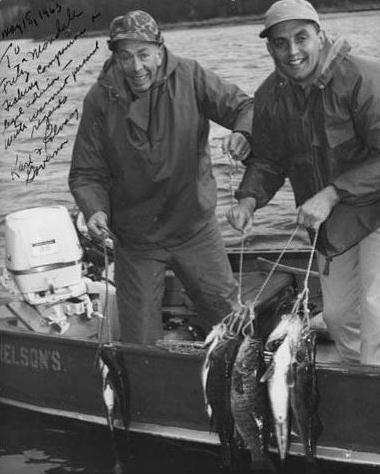
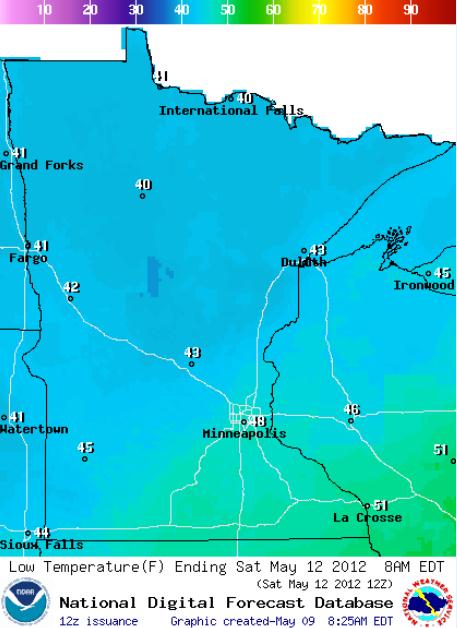
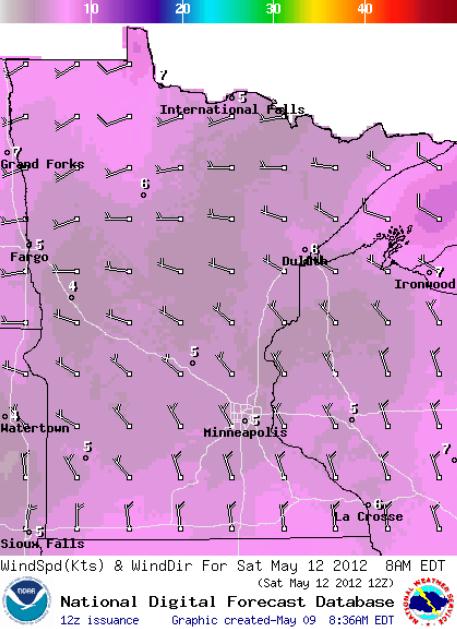
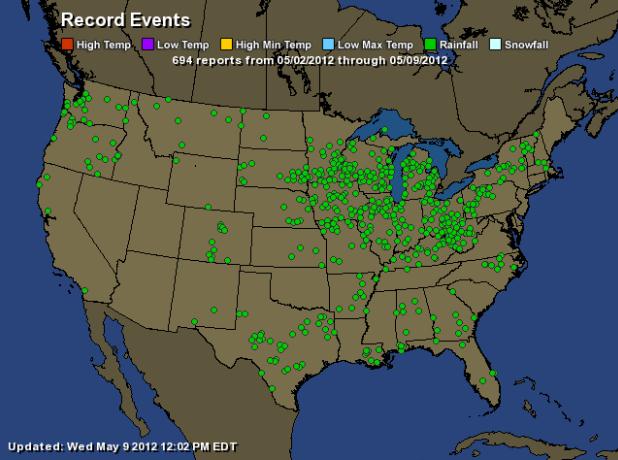

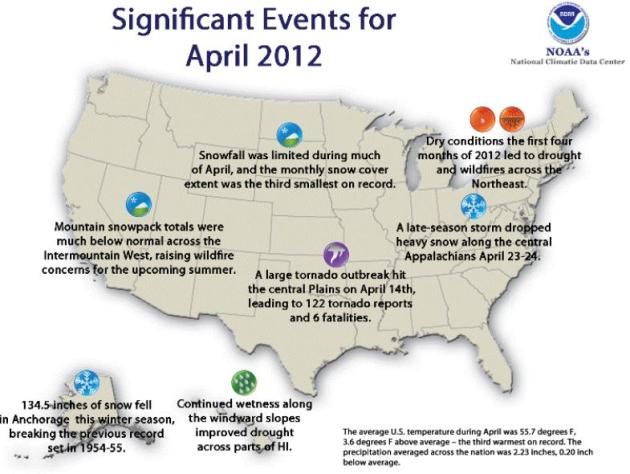

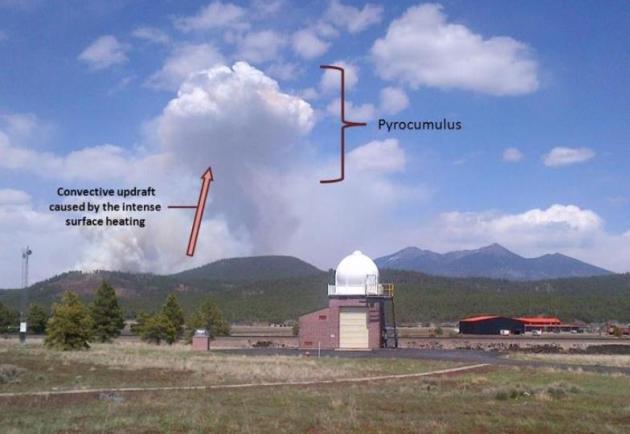
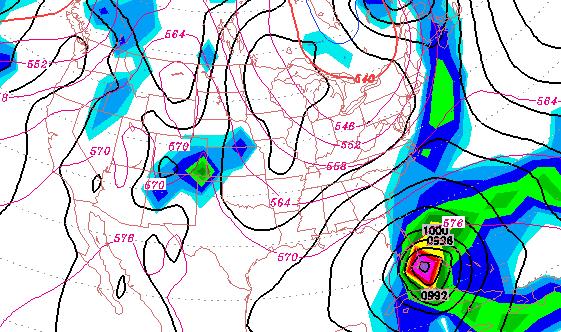

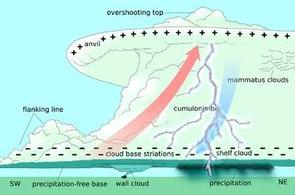
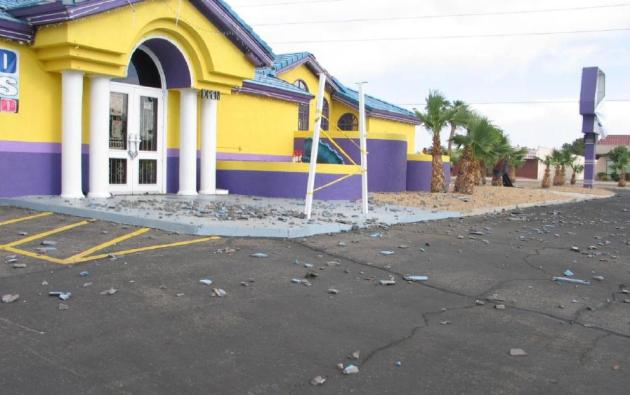
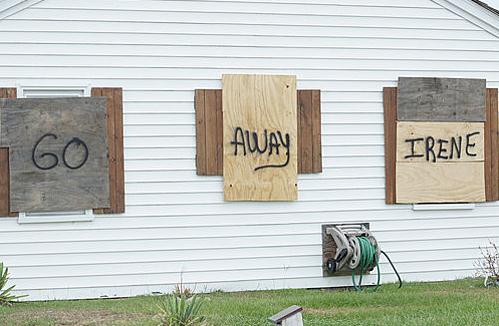
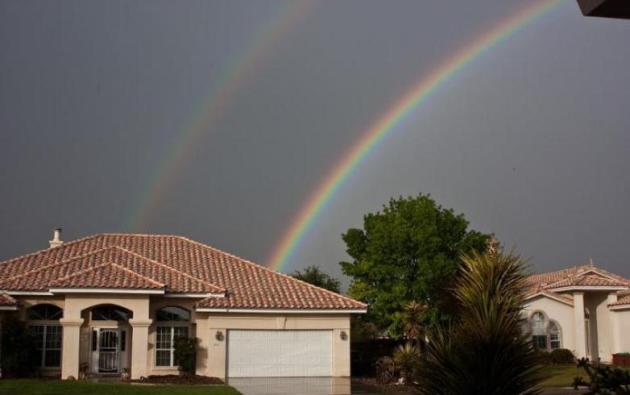
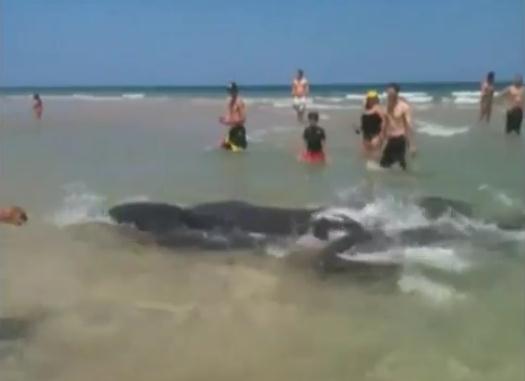

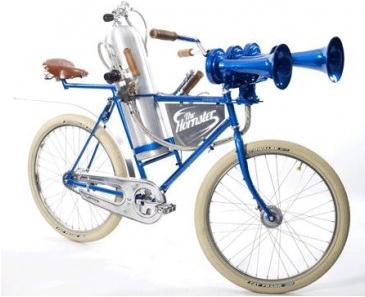

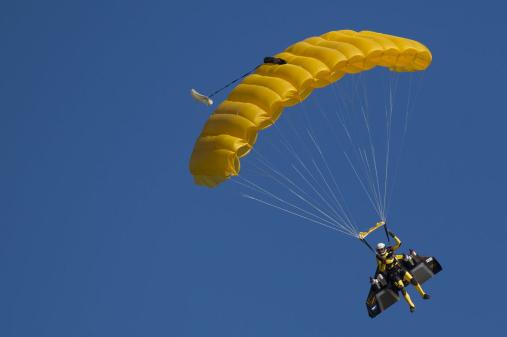
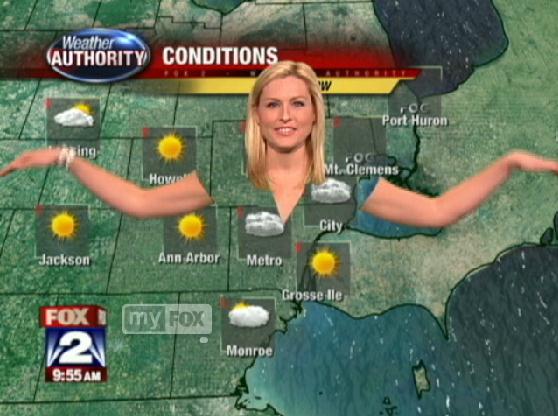





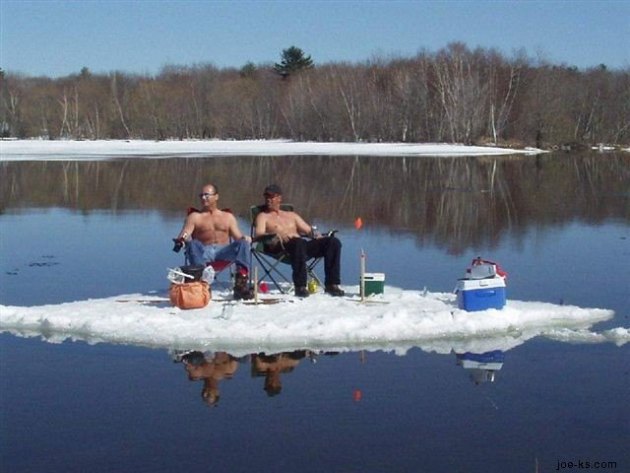








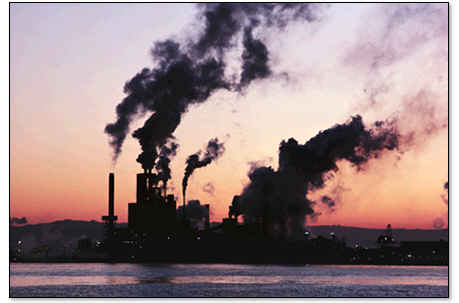
No comments:
Post a Comment